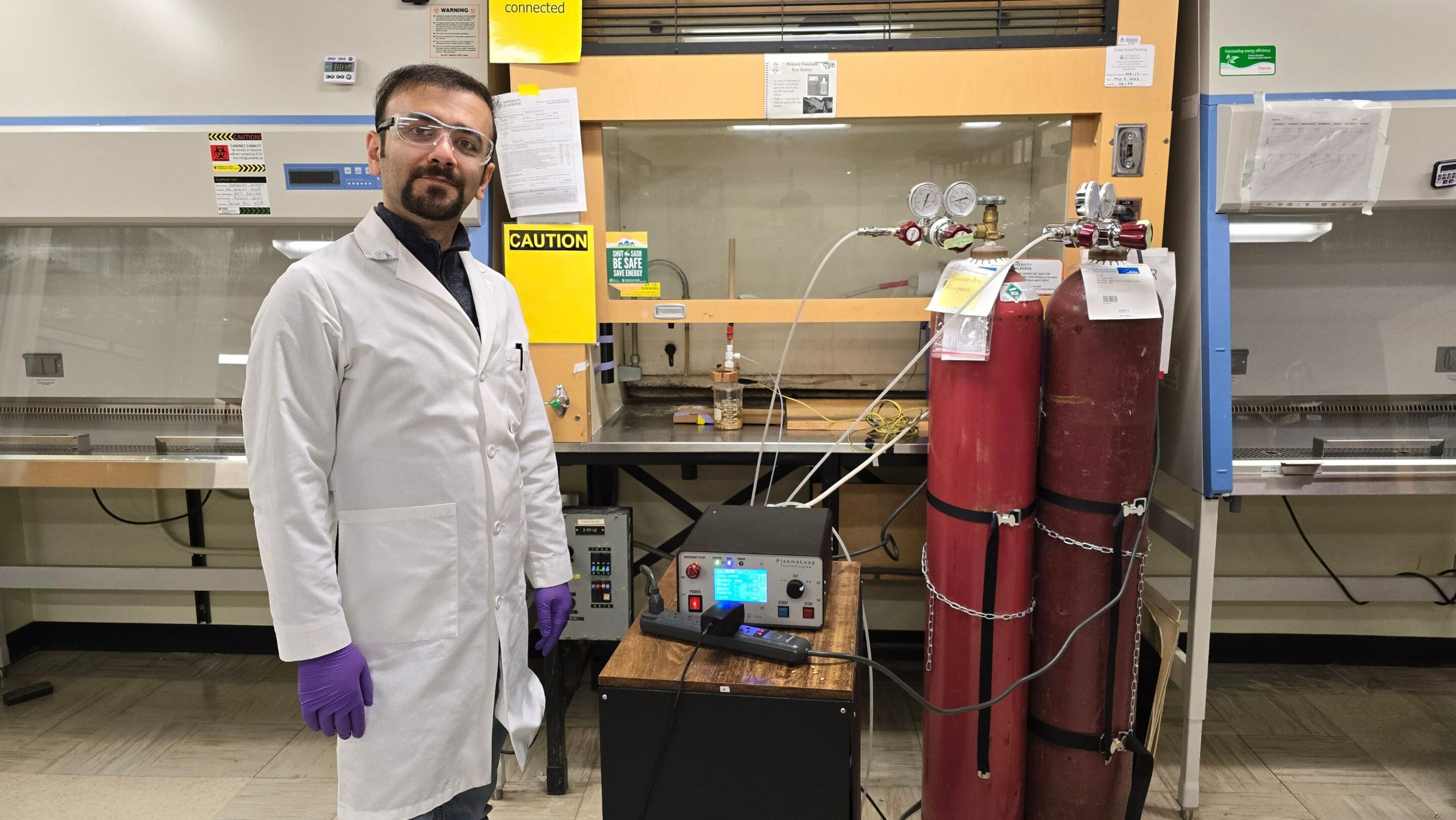PHOTO: Researcher Ehsan Feizollahi demonstrates the cold plasma steeping technology he and his research team are developing to decontaminate barley. Barley grains are immersed in plasma-activated water in a beaker. (Photo: Supplied)
A low temperature version of the matter that makes up stars shows potential for reducing food safety risks and agricultural product loss.
Using plasma — the stuff of outer space — University of Alberta researchers have found an effective way to decontaminate grain tainted by mould, and also boost seed germination.
By treating wheat and barley grains with atmospheric cold plasma — a relatively low-temperature version of the typically superheated matter — they were able to lower the levels of harmful toxins caused by fungi that grow in warm, humid conditions and commonly infect grain.
The discovery “can provide the food processing and livestock feed industries with more effective, efficient ways to process grains that are safe for consumption,” says Ehsan Feizollahi, who led the research to earn a PhD in food science and technology.
These harmful toxins, known as mycotoxins, infect more than 25 per cent of globally produced grains each year, including barley, wheat and oat grains in Western Canada, resulting in lower-quality crops and financial losses to farmers. They also pose threats to human and livestock health, including cancer, lung disease, brain and kidney damage, or even death.
“There is no effective method currently available for reducing mycotoxins on grain,” Feizollahi notes, adding that common food processing practices such as roasting, baking and frying may only partially remove mycotoxins.
“As an emerging technology, cold plasma shows a lot of potential for reducing food safety risks,” says professor M.S. Roopesh, who supervised Feizollahi’s work.
Using the plasma to decontaminate the grains lowered the levels of two toxins that are particularly troublesome in Canada, by 54 per cent, which is a promising start, Roopesh says.
“Ultimately, that means farmers could use more of their grain, so there’s less waste, and from the health point of view, humans and animals can consume the grain and not be affected by mycotoxins.”
The full article can be seen here.





